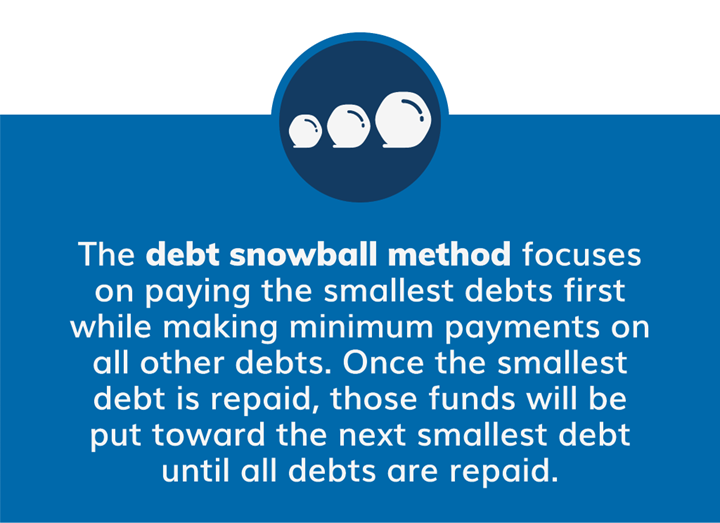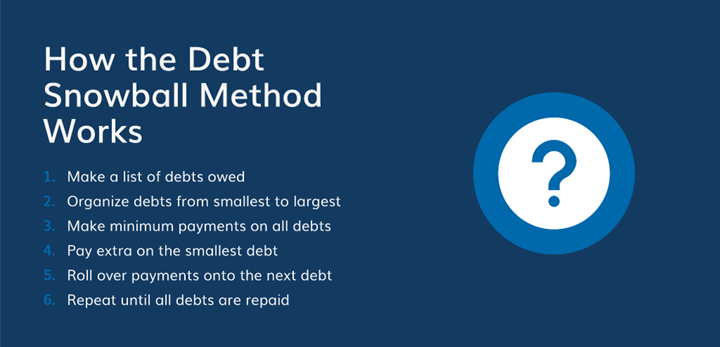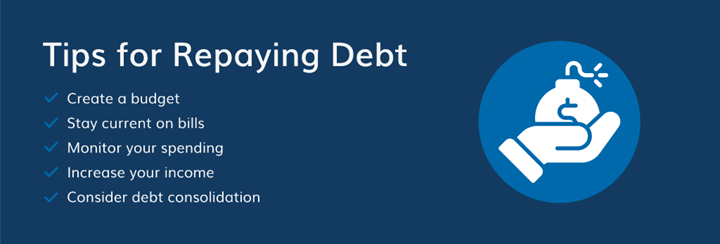Paying off debt can seem overwhelming when you don’t have a plan, but there are strategies that can help. The debt snowball method is one strategy you can use to start paying off your debt and making a tangible difference. You don’t have to be a financial expert or qualify for any special loans to use the debt snowball method, making it an accessible option.
So, what is the debt snowball method, and how does it work? Keep reading to find out how you can use this strategy to take control of your debt and get yourself back on track.
- What Is the Snowball Method for Debt?
- How Does the Debt Snowball Method Work?
- Additional Tips for Repaying Debt
- Wrapping Up: Using the Snowball Method to Pay Off Debt

What Is Snowball Method for Debt?
The snowball method for debt is a strategy you can use to pay off your debt in a way that makes a noticeable difference. The key to this strategy is paying off your debts in order from smallest to largest, regardless of interest rate, while still making the minimum payments on all other debts. This allows you to use the money you were using to make payments on that smaller debt to pay off the next smallest debt, and so on, creating a “snowball effect.”
The snowball method of debt can be a great way to build confidence when it comes to regaining financial freedom, as it allows you to build momentum as you pay debts off. There are many benefits to resolving your debt, and using the debt snowball method can be an easy way to experience these benefits.
How Does the Debt Snowball Method Work?

The debt snowball method can help you stay motivated to pay off your debt by reducing your total monthly payments as soon as possible. Below, you can find a step-by-step breakdown of how you can use the snowball method to pay off debt.
1. Make a list of debts owed
The first step to resolving your debt is to make a list of all the debts you owe, including who you owe them to and how much you owe. Missing minimum payments will increase your total debt as interest will accrue, so make sure you include any debt you may have. Make sure to include information such as the creditor, balance, interest rate, and minimum payment. With this list of debts on hand, you can then check off each credit account as you go to monitor your progress.
2. Organize debts from smallest to largest
Now that you have your list of debts, organize them from smallest to largest, regardless of interest rate. This is crucial because you need to start with the smallest debt and work your way up, otherwise you’re not reaping the benefits of the debt snowball method. With your list of debts from smallest to largest, you’ll be able to visualize each debt and track your progress over time.
3. Make minimum payments on all debts
Making your minimum payments on time is one of the most important elements of using the snowball method to pay off debt. Each minimum payment you miss means you’re not contributing to paying off your debt, which may result in expensive penalties and accrued interest for those missed payments, putting you in even more debt
It’s important to take time to create a budget that allows you to make all of your minimum payments while paying bills, buying groceries, and paying other necessary living expenses. This can help ensure the debt snowball method works for you.
4. Pay extra on the smallest debt
Paying off your smallest debt first is the key to the snowball method. When you create a budget that includes all of your minimum payments, make sure you allocate a little extra toward the smallest debt on your list. Once you get that debt paid off, that money can be used toward your next smallest debt.
5. Roll over payments onto the next debt
Now that you’ve paid off your smallest debt, you have a little more flexibility in terms of your monthly budget, allowing you to roll over the minimum balance and extra funds you were paying on your smallest debt to your next smallest debt. Rather than using that extra money for leisure or unnecessary expenses, the snowball method for debt recommends you put that toward the next debt to help you build momentum.
For example, let’s say the minimum payment for your smallest debt was $25 and you paid an additional $15 each month to pay that debt off sooner. Paying off that debt means you have an extra $40 to put toward your next smallest debt. Now, let’s say your next smallest debt was $50 per month. You can combine the $40 per month from the first debt you repaid with the minimum payment of $50 per month for your next smallest debt for a total of $90 per month. Through this example, you can see the amount you’re contributing to your debt snowball, helping you repay your debts sooner.
6. Repeat until all debts are repaid
Keep repeating the fourth and fifth steps until you’ve paid off all your debts. The key benefit of the snowball method is that you’re paying off smaller debts to free up money that you can use to pay larger debts. While having an extra $25 at the start might seem minimal after paying off your first debt, that number can add up quickly after paying off three or four debts, giving you an extra $200 in your budget, for example.
Additional Tips for Repaying Debt
In addition to following the debt snowball method, there are additional tips you can leverage that can help you repay your debt sooner, such as:

- Create a budget: Creating a budget can help you become more financially stable by allowing you to track expenses and follow a plan to pay bills, repay debt, and save.
- Stay current on bills: Falling behind on bills can put you further into debt due to penalties and high interest rates. Staying current on your bills and making your minimum payments can help avoid this.
- Monitor your spending: In some cases, overspending may be the cause of your debt. Monitoring your spending with a simple spreadsheet or an expense tracker app can help you track your spending.
- Increase your income: If possible, finding ways to increase your income can help you repay your debt faster, whether that means negotiating a raise, getting a second job, or starting a freelance business on the side.
- Consider debt consolidation: Depending on your debts, you may have some with high interest rates that sink you further. Consolidating your debt allows you to refinance your debts into one loan with a single interest rate.
Wrapping Up: Using the Snowball Method to Pay Off Debt
Paying off your debt can be hard, and there are a lot of debt collection myths that can make this process more complicated. If you’re having a tough time getting ahead of your debt with your monthly budget, the debt snowball method can be a good strategy.
Need help paying off debt? Midland Credit Management can help you find the right strategy based on your situation. Contact Midland Credit Management to learn more today.